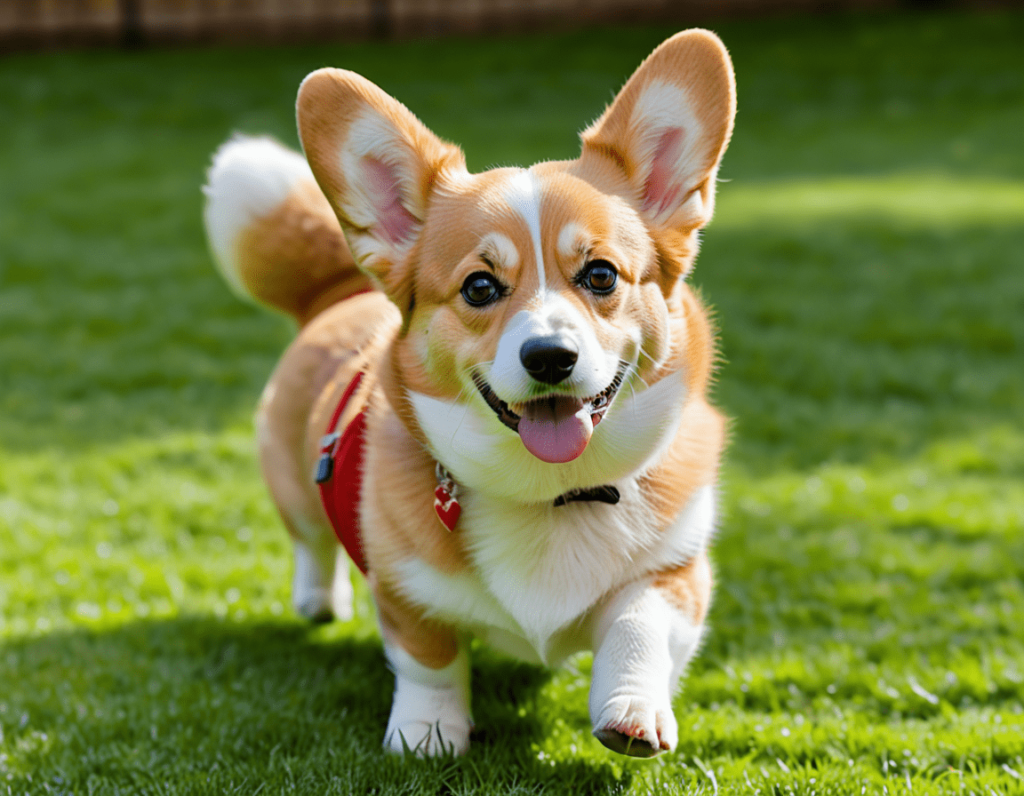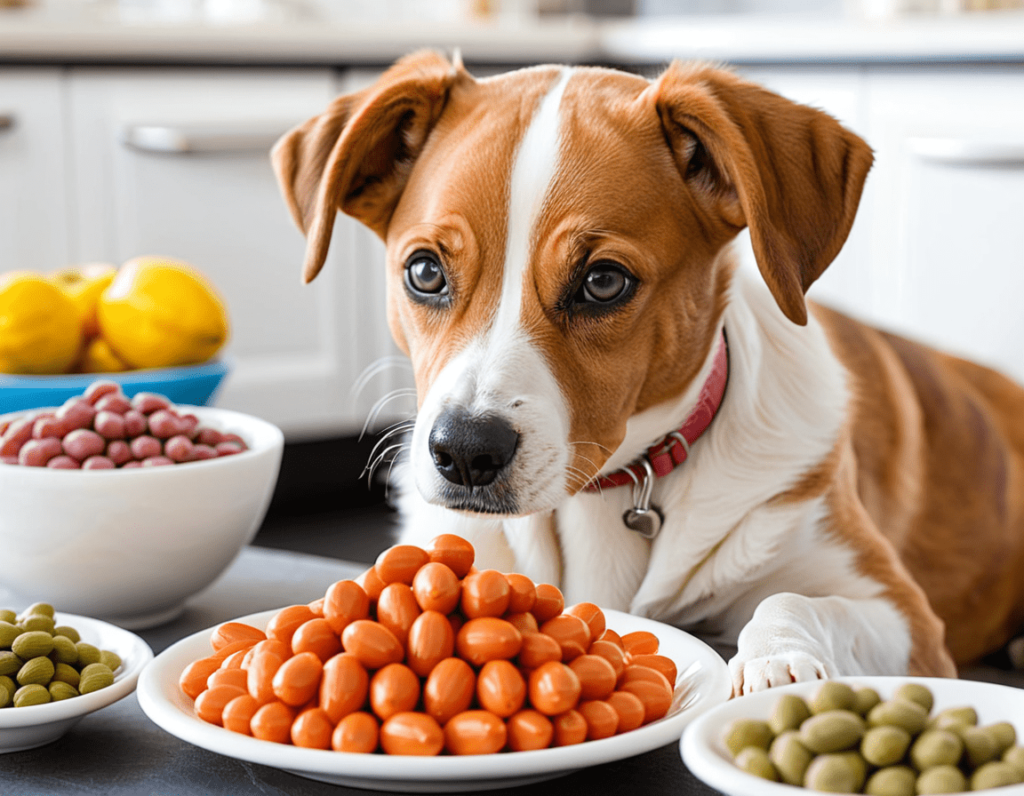
Dogs are often called “man’s best friend,” and there’s a good reason for that! These loyal companions have a unique way of communicating with us and with each other. While they might not speak our language, dogs express their feelings and intentions through body language.
Understanding this silent dialogue can help you strengthen your bond with your pup and keep both of you out of the doghouse. Let’s dive into the fascinating world of dog body language and communication, and maybe throw in a few chuckles along the way!
The Basics of Dog Body Language
Dogs communicate mainly through their body posture, tail movements, facial expressions, and even their ears. Here’s a breakdown of some common signals that can help you decode what your furry buddy is trying to say:
1. Tail Wags: The Canine Morse Code
A wagging tail can mean many things, and not all of them are friendly! A tail wagging quickly and high in the air usually signals excitement and happiness. However, if the tail is low and wagging slowly, your dog might be feeling insecure or submissive. And if the tail is stiff and wagging, well, your dog might just be plotting their next mischief—like stealing your sandwich!
2. Ears: The Mood Indicators
Dogs have a variety of ear positions that can tell you how they’re feeling. Ears perked up and facing forward? Your dog is alert and interested—maybe they heard the treat bag crinkling! If the ears are back and close to the head, your dog might be feeling scared or anxious. But don’t worry, even the most confident pups have those moments; they just don’t like admitting it!
3. Posture: The Story of the Stance
The way your dog stands can reveal a lot about their mood. A relaxed dog will have a loose body and may even roll over for a belly rub. If your pup stands tall with a puffed chest, they’re feeling confident. But if they crouch low to the ground, tail tucked between their legs, it’s time for a little extra love and reassurance. Remember, every dog has their quirks, so don’t be surprised if yours prefers a sunbathing stance over the typical “show me your belly” pose!
4. The Facial Expressions: More Than Just a Cute Face
A dog’s face can show a range of emotions. Soft eyes, a relaxed mouth, and a slight smile indicate a happy dog. A dog that’s showing its teeth might not be trying to audition for a toothpaste commercial; it could be a sign of aggression or fear. If your dog looks like they’re giving you the stink eye, it might just be because you dared to eat a treat without sharing!
How Dogs Communicate with Each Other
Understanding how dogs interact with one another can give you insight into their behaviour at the dog park. Dogs often use their body language to establish their place in the social hierarchy. A playful bow—front legs stretched forward while the back end remains upright—is a clear invitation to play. On the other hand, stiff bodies and a hard stare can mean it’s time for a doggy showdown (think of it as the canine equivalent of a staring contest).

Common Misinterpretations of Dog Communication
Sometimes, we humans can misread our furry friends. For example, a dog that jumps up on you might not be trying to dominate you but is simply excited to see you. Remember, a wagging tail doesn’t always mean your dog is happy. It could also signal overexcitement or anxiety. So, if your pup’s tail looks like it’s about to take flight, take a moment to assess the situation!
Tips for Better Communication with Your Dog
- Observe Before Interacting: Take a moment to watch your dog’s body language before approaching them. If they look relaxed, it’s a good time for cuddles. If they’re tense, give them some space.
- Mirror Their Energy: Dogs often respond well to our energy. If you’re calm and relaxed, your dog is more likely to feel the same. If you’re anxious, your pup might think there’s a reason to be worried—like the mysterious vacuum cleaner lurking in the corner!
- Use positive reinforcement: When your dog communicates well or shows good behaviour, reward them with treats and praise. Positive reinforcement helps them learn that good communication gets them the love (and snacks) they crave!
The Humor in Dog Communication
Now that we’ve covered the essentials of dog body language, let’s have a little fun with it. Dogs have a knack for bringing joy into our lives, often through their quirky and hilarious communication styles. Here are some light-hearted observations that might make you chuckle:
1. The Over-enthusiastic Welcome Committee
Have you ever walked through the door to a dog that acts like they haven’t seen you in years, even if you just stepped out to grab the mail? Their tail might be spinning like a helicopter, and they’re practically doing backflips! It’s as if they believe you are a celebrity returning from a world tour, and they’re your most devoted fan. Just don’t let them steal your socks in their excitement; that could be a slippery slope!
2. The Canine Eye Roll
Some dogs have a talent for the dramatic. When you ask them to perform a trick they know perfectly well, their expression can say, “Really? Again? You want me to sit? I’m not your robot!” You might even catch a slight eye roll, as if they’re contemplating if it’s time to start their own YouTube channel, “Life with Humans: A Dog’s Perspective.”
3. The Couch Potato vs. The Agility Master
Every dog has their own personality. Some are enthusiastic athletes ready to chase after anything that moves, while others would rather lounge on the couch, giving you a look that says, “Exercise? I thought you said extra fries!” It’s all about finding that balance—encouraging a little playtime while respecting your dog’s inner sloth.
Keeping the Communication Open
To maintain a healthy relationship with your dog, it’s crucial to keep the lines of communication open. Here are some additional tips to ensure you both understand each other clearly:
1. Consistency is Key
Just like how we appreciate clear signals from our friends, dogs thrive on consistency. Use the same commands and hand signals every time, so your dog knows exactly what you mean. And for the love of kibble, avoid confusing them with “sit” one day and “plop your furry butt down” the next!
2. Learn the Signals of Other Dogs
When you’re out and about, pay attention to how other dogs communicate. This can be invaluable in preventing misunderstandings or dog disputes. For example, if you see a dog with its tail tucked and backing away, you might want to keep your own pup on a short leash to avoid a canine confrontation. Just remember: not all dogs are as friendly as yours—some might think they’re auditioning for a role in a soap opera with all that drama!
3. Stay Attuned to Your Dog’s Mood
Just like us, dogs have off days. Some days they might feel like playing fetch, while other days they prefer a cosy nap. Being in tune with your dog’s mood will make it easier to adapt your expectations and interactions. If they give you a sigh that seems to echo through the room, it might be time to settle in for a movie night together—just don’t be surprised if they hog the blanket!

Dog Body Language and Communication FAQs:
Understanding dog body language and communication can sometimes feel like deciphering an ancient code. To help you navigate this unique form of expression, here are some frequently asked questions (FAQs) about dog body language and communication.
1. What does it mean when a dog’s tail is wagging?
A dog’s tail wagging can have different meanings depending on the context. Generally:
- High and fast wagging: This usually indicates excitement and happiness.
- Low and slow wagging: This can signify insecurity or submission.
- Stiff wagging: If the tail is rigid and held high, your dog may be feeling threatened or assertive.
2. Why do dogs tilt their heads?
When dogs tilt their heads, it’s often an adorable way of showing curiosity or trying to understand what you’re saying. They may be attempting to make sense of a sound or a command, often trying to engage with you. It’s their way of saying, “I’m listening—please tell me more about that strange noise!”
3. What does it mean when a dog’s ears are back?
When a dog’s ears are pinned back against their head, it can indicate fear, anxiety, or submission. However, if a dog approaches you with their ears back but in a relaxed posture, they might simply be showing friendliness or a desire to be non-threatening.
4. How can I tell if my dog is stressed?
Stress signals in dogs can include:
- Panting or drooling excessively
- Whining or barking more than usual
- Cowering or hiding
- Yawning or licking their lips
- Avoiding eye contact or turning their head away
If you notice these signs, it’s important to create a calm environment and assess what might be causing their stress.
5. Why do dogs sometimes show their teeth?
Dogs can show their teeth for several reasons:
- Playful behaviour: During play, dogs might “smile” or show their teeth in a relaxed manner.
- Aggression or warning: A dog that bares its teeth with a stiff body posture is likely feeling threatened and may be preparing to defend itself.
- Pain or discomfort: If a dog is feeling unwell, they might show their teeth as a defensive mechanism.
6. What does a dog’s relaxed body posture look like?
A relaxed dog will have a loose body posture, a wagging tail (not too fast), ears in a neutral position, and soft facial expressions. They might roll onto their backs to expose their belly, inviting affection. It’s the canine equivalent of saying, “Life is good; pet me!”
7. How do I know if my dog wants to play?
A dog that wants to play will often exhibit a “play bow,” where they lower their front legs while keeping their rear end raised. They might also wag their tail enthusiastically, bounce around, or bring you a toy. If they give you those puppy-dog eyes and a goofy grin, it’s a sure sign they’re ready for some fun!
8. Can dogs communicate with each other through body language?
Absolutely! Dogs communicate with one another using body language. They establish dominance, show submission, and signal playfulness through their postures, tail movements, and facial expressions. Watching dogs interact can provide valuable insight into their social dynamics.
9. What should I do if my dog is growling?
Growling can be a warning signal that your dog is feeling threatened or uncomfortable. It’s important to take this seriously. Evaluate the situation to determine what might be causing the growl—whether it’s an unfamiliar person, another dog, or even a situation they find stressful. If necessary, remove your dog from the situation and consult a professional trainer or behaviourist if the growling persists.
10. How can I improve my communication with my dog?
To enhance communication with your dog:
- Observe their body language. Pay attention to their signals and reactions in different situations.
- Use consistent commands: Always use the same words and gestures for commands to avoid confusion.
- Practice positive reinforcement: Reward good behaviour with treats and praise, reinforcing your dog’s understanding of what you expect.
Conclusion
Understanding dog body language and communication is an essential skill for any dog owner. By familiarising yourself with the signals your dog uses, you can foster a deeper bond and create a harmonious environment. Remember, every dog is unique, so take the time to learn the specific cues of your furry friend. With a little patience and humour, you’ll be well on your way to becoming a canine communication expert!


